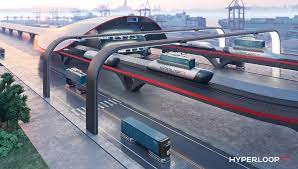Italy: Authorities plan Hyperloop between Padua and Venice

Venice: Italy’s Ministry of Transportation is studying a Hyperloop connecting the historic cities of Padua and Venice.
HyperloopTT, Hyperloop Italia, the Veneto regional highway authority (CAV), and the ministry signed a memorandum of understanding (MOU). Consequently, the four entities will study the possibility of a Hyperloop running along highways in the Veneto region.
HyperloopTT claims the Veneto Hyperloop could be ready in time for the 2026 Winter Olympics, a press release states. I don’t buy that claim because it seems unrealistic.
Italy is infamous for its infrastructure delays. For example, corruption, organized crime, and politics have been delaying plans for a bridge between Calabria and Sicily for decades. Therefore, I doubt anybody will ride the Hyperloop to the 2026 Winter Olympics. Although it could be available for the 2038 Winter Olympics — if they hold the games in Italy.

HyperloopTT is a California company that claims to have a global team of over 800 engineers and other experts. It also claims to have 50 corporate and university partners.
Impressively, HyperloopTT operates a 3,000-square meter Hyperloop Research and Development Center in Toulouse, France. Consequently, HyperloopTT claims to operate the world’s first full-scale Hyperloop system. However, as far as I know HyperloopTT has not had people ride in its system as competitor Virgin Hyperloop One did.
Conversely, HyperloopTT claims to be building a commercial prototype for the first passenger Hyperloop. HyperloopTT’s other plans include the HyperPort cargo system. They describe HyperPort as a “plug-and-play solution for port operators that can move cargo containers hundreds of kilometers in a minute.
HyperloopTT boasts that HyperPort can move 2,800 20-foot Equivalent Units of Cargo (cargo containers) in a day. They claim “HyperPort capsules can sustainably transport two 20-foot containers or one 40- or 45-foot standard or high cube container at airplane speeds.”
A Hyperloop is a giant tube from which vacuum pumps remove most of the air. The low air pressure allows magnetic levitation (maglev) to push capsules through the system at high speeds. To explain, jets move at high speeds because of low pressure at the high altitudes they fly at.
Theoretically, Hyperloop could achieve airplane speeds on the ground by lowering air pressure. For example, HyperloopTT claims its Hyperloop capsule could move at 760 miles-per-hour (1,223.1 kilometers-an-hour).
Hence, I calculate a Hyperloop capsule could move between Padua and Venice in three-to-four minutes. If the capsule was moving at 1,223.1 kilometers-per-hour. It will move at 20.386 kilometers a minute.
The distance between Padua and Venice is 46.4 kilometers. That trip currently takes an hour on the E70 and A57 Autostrada motorways, Google estimates. One advantage to Hyperloop is to get cars off the Autostrada and reduce traffic so Italian citizens can drive on the motorways their taxes pay for.
One advantage to Hyperloop is that will enable tourists to land at Padua airport to visit Venice. Venice is one of the world’s most popular tourist attractions. Up to 110,000 tourists visit the city on a typical day, Dream Big estimates. In contrast, only 55,000 people call Venice home.
In 2019, 5.5 million visitors arrived in the City of Canals. Although the number of visitors fell to 2.1 million in 2021 because of COVID-19. Tourism is Venice’s only business. There were 1,126 hotels in Venice in 2021. Up to 1.276 million people booked hotel rooms in Venice in July 2019.
HyperloopTT founder Bibop Gresta formed Hyperloop Italia to build Hyperloop projects in Italy. A HyperloopTT press release claims Hyperloop Italia is “the first company in the world that has obtained an exclusive license for the commercial implementation of the Hyperloop project.”





